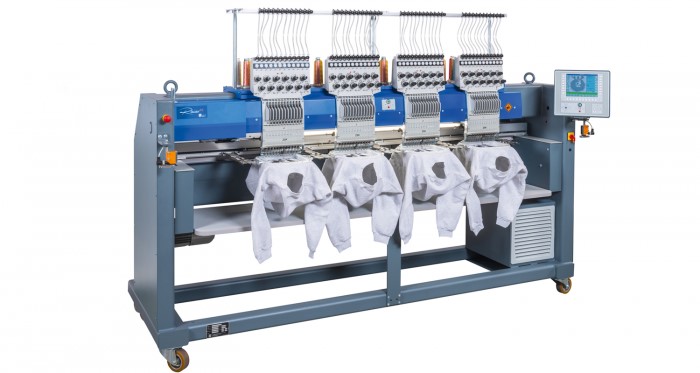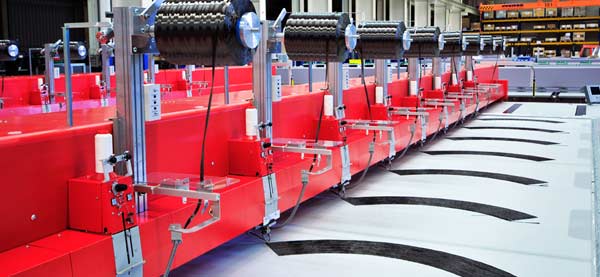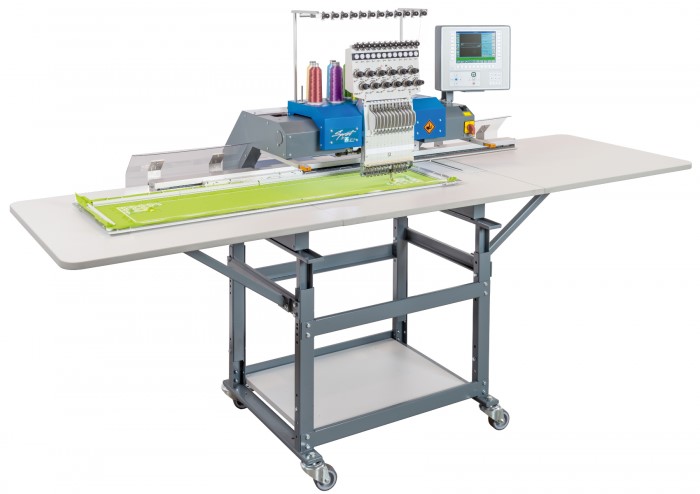What is the IoT and How Will It Affect Embroidery Machines?
Business is all about staying ahead of the curve, and the next curve is deemed to be the Internet of Things (IoT). If you haven’t yet heard about the IoT then this is your chance to better understand the steadily approaching future of business and manufacturing.
What is the Internet of Things?
The IoT is part of the advent of 5G internet connections. 5G is the next step up from 4G, and will bring stronger signal and faster loading times, providing a better connection overall. This is being signalled as the fourth industrial revolution and will see a number of items communicating with each other across the internet, building up more data and statistics for business owners to use when streamlining their processes and resources.
One of the many benefits of the approaching IoT is that individuals will have far more access to data about their lives and the use of the objects they own. This should not only encourage greater productivity but it will also automate more processes amongst our objects.
A key part of the IoT is that objects will, ‘talk to each other’, meaning that they will share information amongst themselves to provide the best experiences for their users. A large part of this revolution will be based in wearable technology so a basic understanding of the Internet of Things could be most important for those involved in crafting the garments of the future.

Creating Garments that Comply with the IoT
One example we’ve already seen is the Fitbit and similar watches which capture data on the health of the individuals wearing them, but the future already requires sensors to leave the realms of the wristwatch and instead, embed themselves quite firmly in fabric applications.
The medical sector could greatly benefit from beds which can better document the needs of their patients, and in some cases responding to those needs and delivering the appropriate medication. Vests which measure the fluid in the lungs of patients are already in development, and we can surely expect to see similar developments to technological wearables in the future. The question is, how will you respond to the changes in the market for wearable technologies?
It is thought that wearable technology that monitors health will be extremely popular amongst the over-55’s bracket, but there are plenty of recreational possibilities outside of the health industry. In the entertainment industry, developers and embroiderers are working together to develop reactive vests to provide a more immersive experience when users are within Virtual Reality. These VR Vests pulse in areas according to sensational occurrences in a virtual experience.
We offer plenty of ZSK technical embroidery machines to help you begin or continue your journey in smart textile manufacturing. These machines have the capabilities to lay media such as fibre and wire, so contact us if you would like any advice or information regarding our options.

Will the IoT Change the Machines We Use to Create?
In short, yes. The opportunity to gather more data on how our machines work, and in some situations how they may be failing, will enable us to adjust our routines to improve output and accuracy. Mitsubishi Electric are already applying the focus of the IoT to their own sewing machines with an application that collects data in real-time and stores it for historical analysis. This is just one example of an embroidery and sewing machinery manufacturer trying to stay ahead of the game but Brother also hopes to be launching its own IoT software soon too. We expect that in time, all mainstream machinery will make use of the IoT. With ZSK creating machines that will produce textiles that function with the IoT, we imagine that it won’t be too long until they also add IoT compatibility to their machines too.

Overall, the Internet of Things promises to be an educational experience for all those currently involved in manufacturing-related enterprises. While there will be a need for more training in businesses to keep staff up to speed with new industrial embroidery machines technologies and consumer demands, ultimately, this change should revolutionise the way we work for the better.

